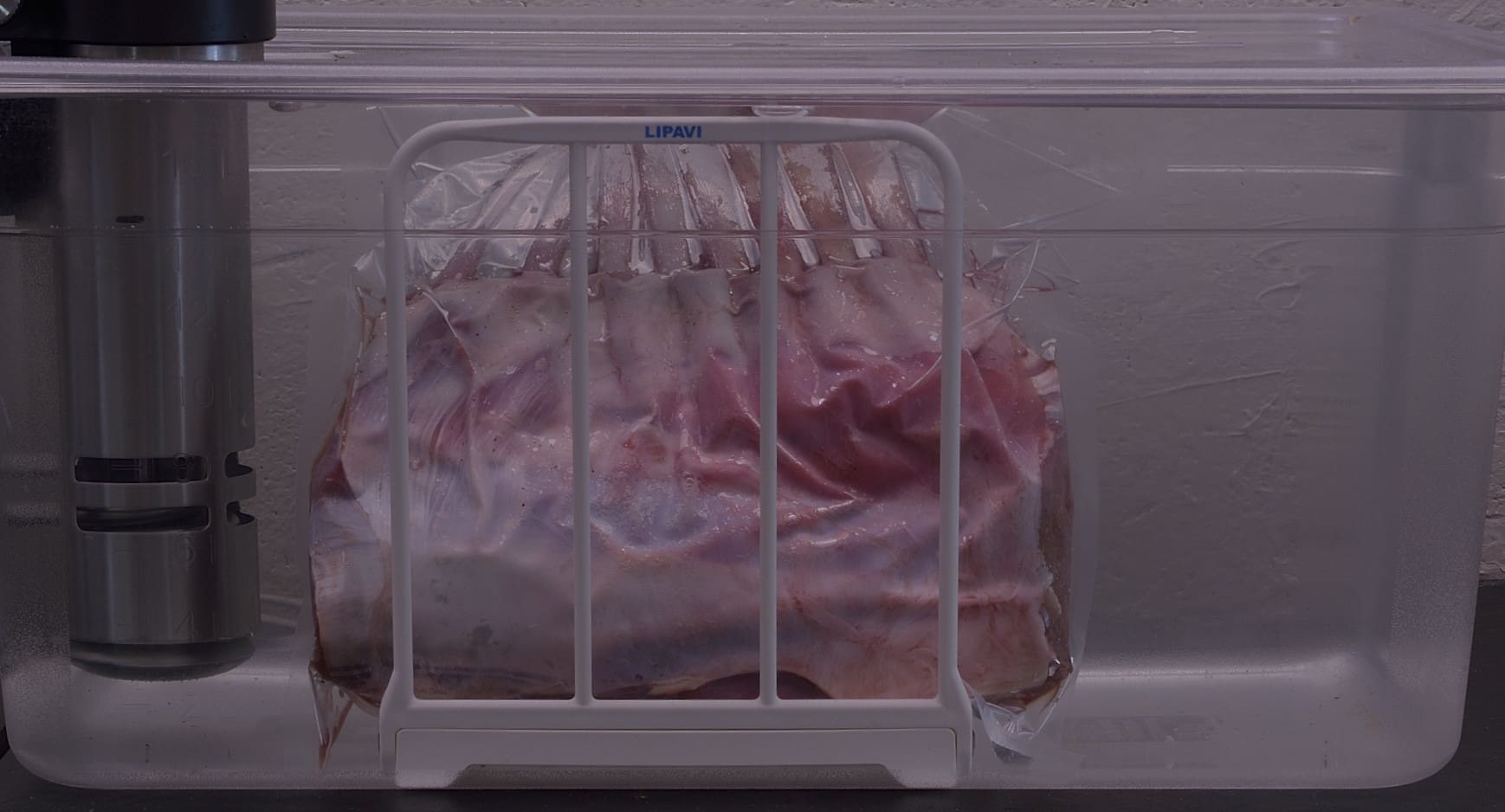
Above: Lipavi C15 container, N15 polycarbonate rack. Lipavi C15L lid.
How do you like your venison?
Venison (and elk) can be cooked to the same specifications as beef and lamb. Because of the pasteurization capabilities of sous vide, venison can be safely served at almost any level of apparent doneness,
There is debate as to the exact definition of “rare,” “medium rare,” “a point,” etc. A little practice will help you learn just exactly what temperature achieves your preferred appearance of doneness.
Here are some basic temperature setting guidelines:
Rare: 129 F/54 C.
Medium rare: 135 F/57 C
Medium to Medium well: 140 F/60 C.
Well done: 150 F/74 C.

Serves 3-4
Level of difficulty: 3.0
Procedure:
Preheat the water in your sous vide bath to the temperature that most closely matches your preference. For the purpose of this demonstration, we used 129 F/54 C.
Processing the rack
After vacuum sealing the rack of venison, process at the desired temperature for
4-8+ hours as per your scheduling convenience. There is no “moment” before which the rack of venison is not ready and after which it is overcooked. Even though the process of tenderization continues, the conversion of collagen to gelatin at sous vide temperatures is extremely slow–a difference of 2-3 hours is usually undetectable to the diner. As the temperature used increases, the tenderization process accelerates. Even so, a rack of venison processed at 140 F/60 C for 8 hours will not be noticeably different than one that was processed for 4 hours.
Prepare the other components of your presentation while you are waiting for the venison. Once the rack has been removed from the sous vide bath, it will be ready for service within one hour.
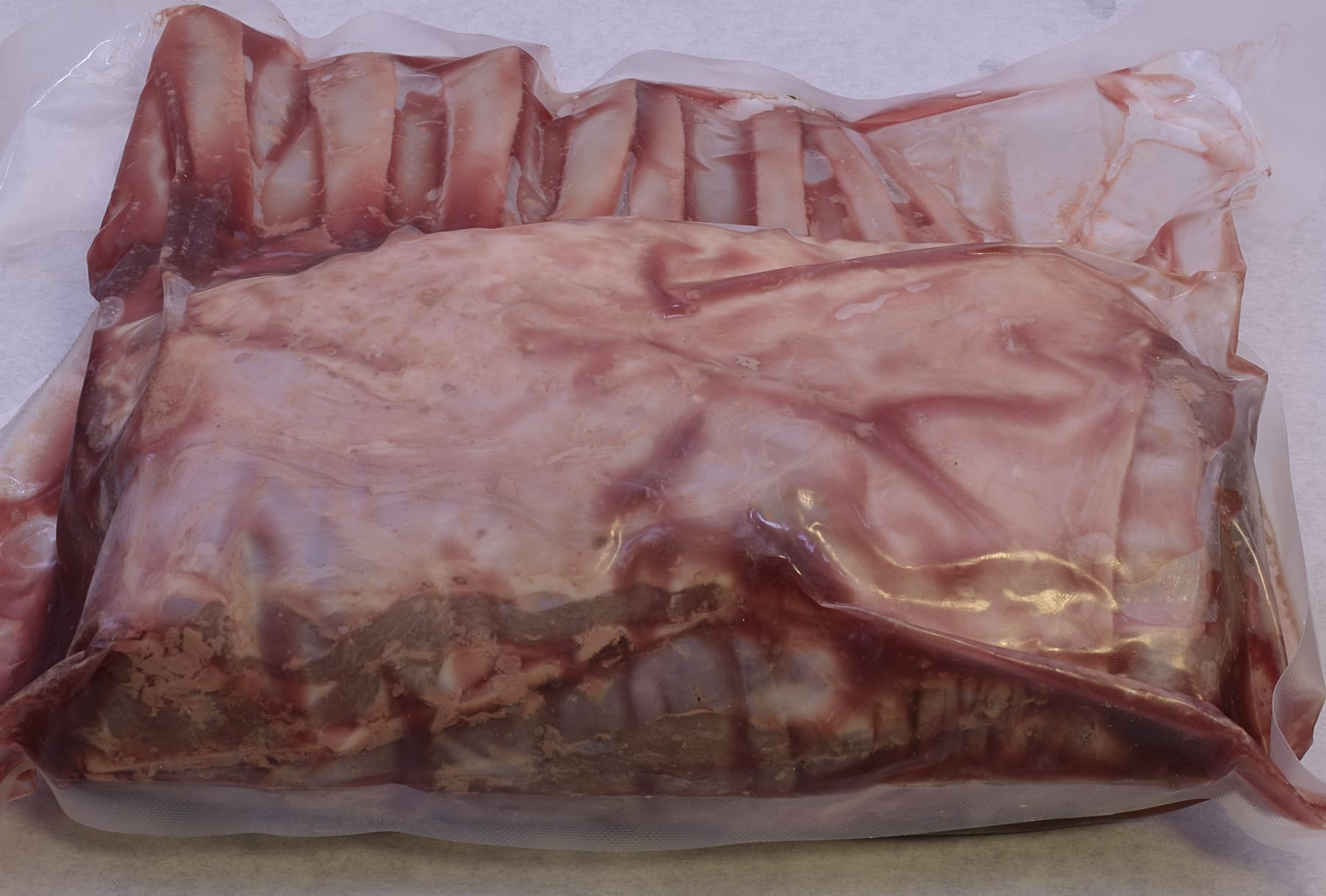
Preheat your oven to 400 F/204 C.
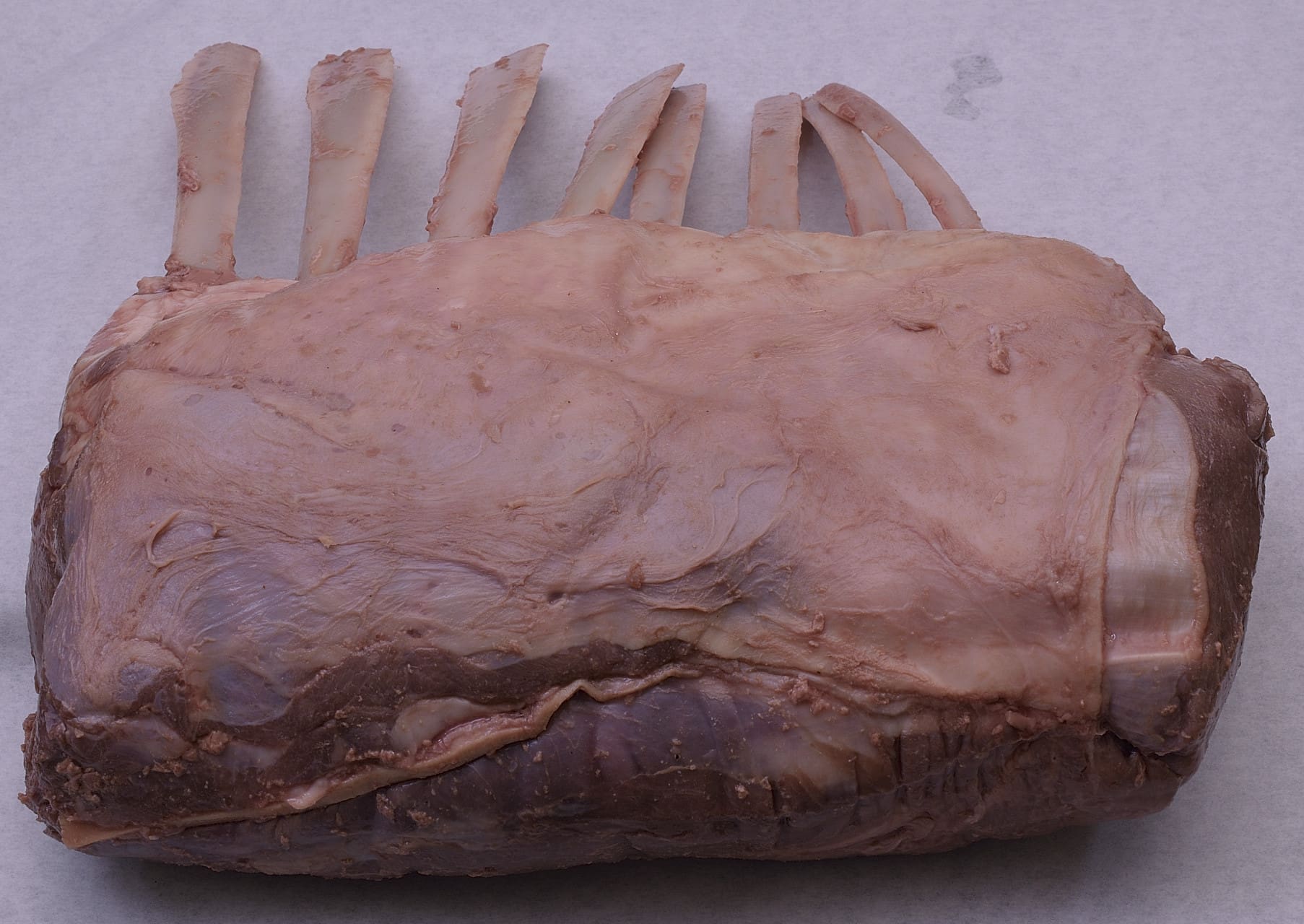
Remove the rack from the bag and pat dry.
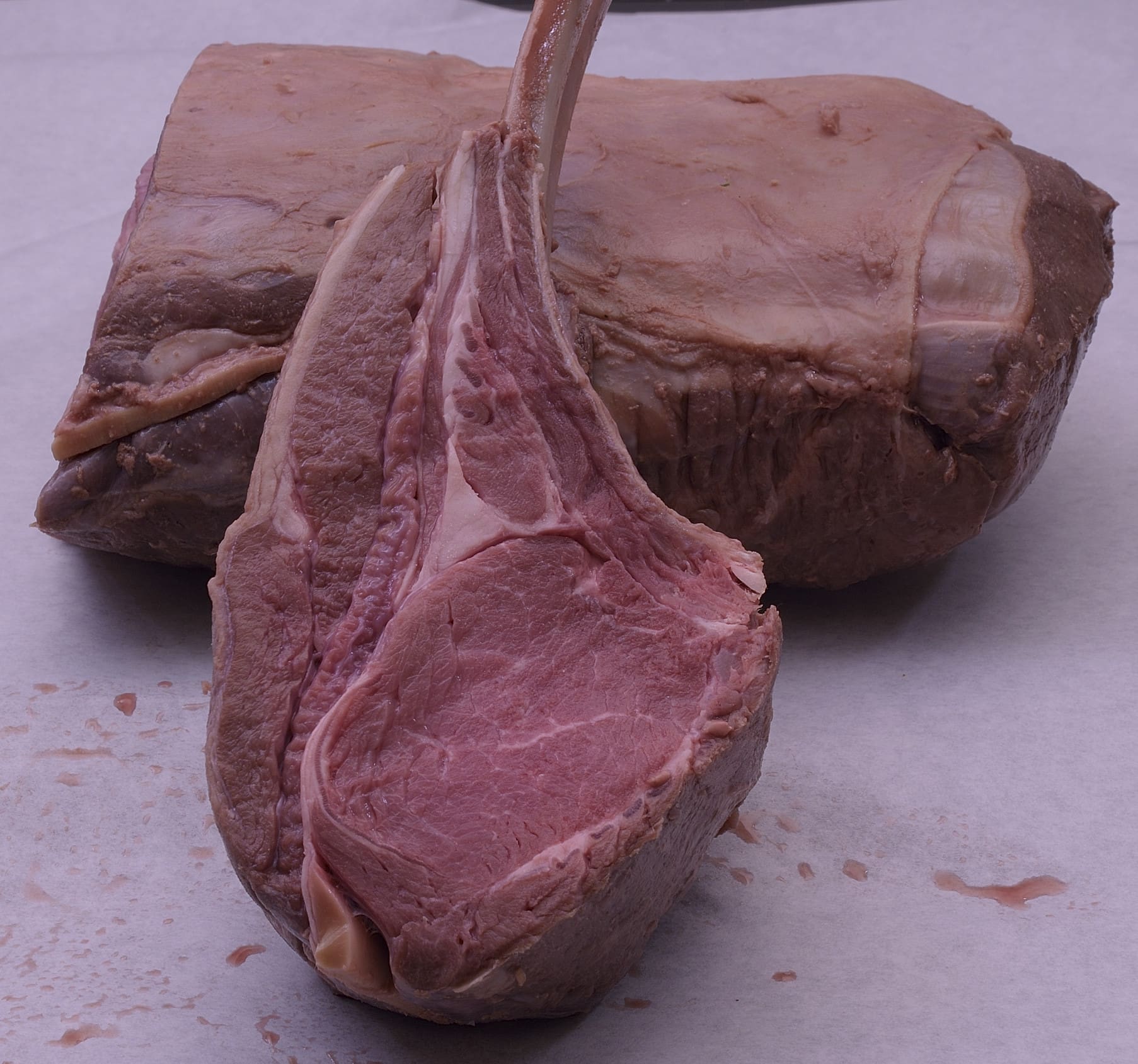
Cut a double chop from this shoulder end of the rack and set aside. Note the 2 visible sections of “flap” meat attached to the main muscle. The top one is called the latissimus dorsi. Depending on the butcher, the latissimus dorsi may or may not be attached at point of sale. It is considerably tougher than the rack itself. Remove this upper layer from the chop.
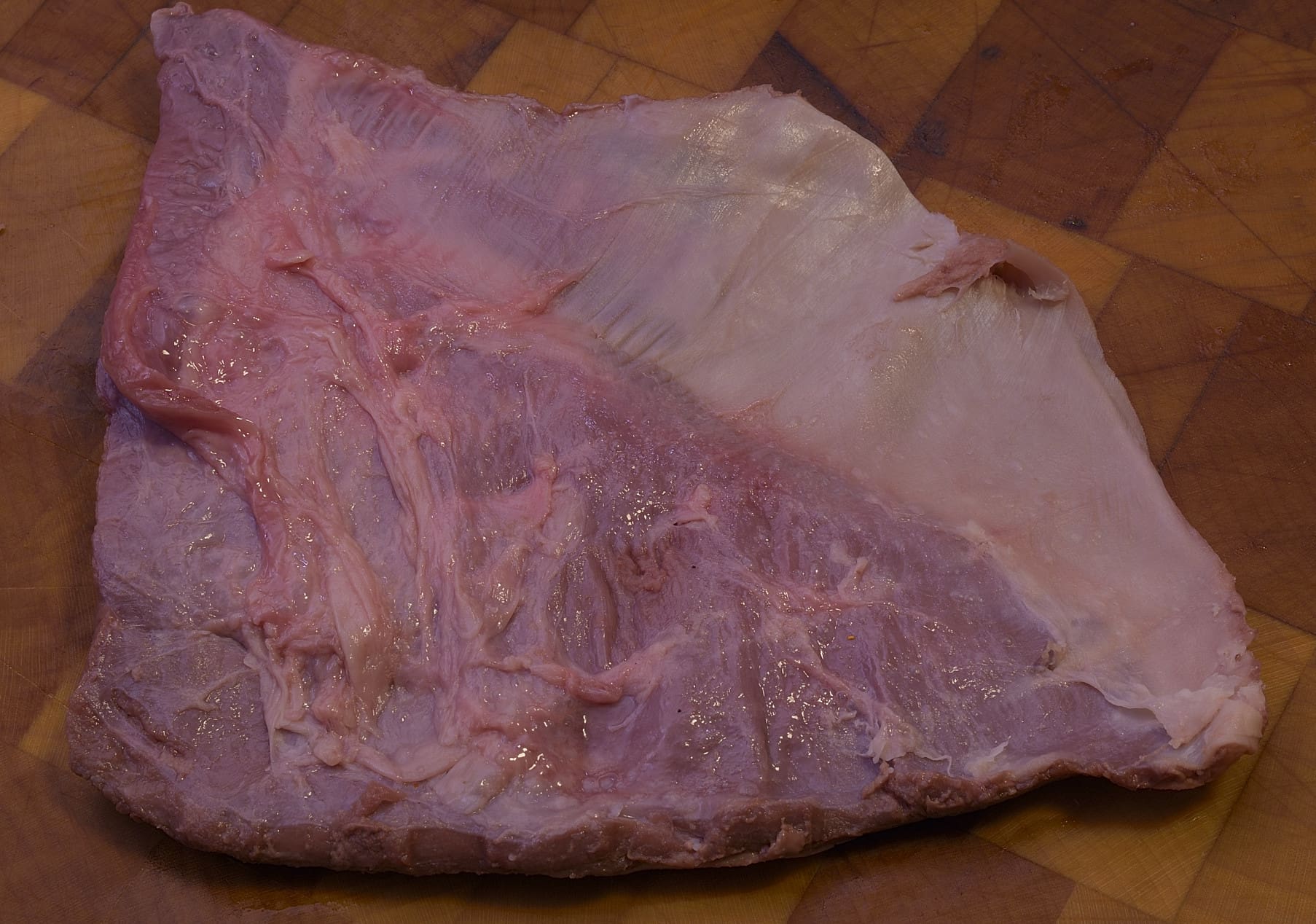
With a little help from a sharp knife the flap can be peeled off of the rest of the rack with little resistance.
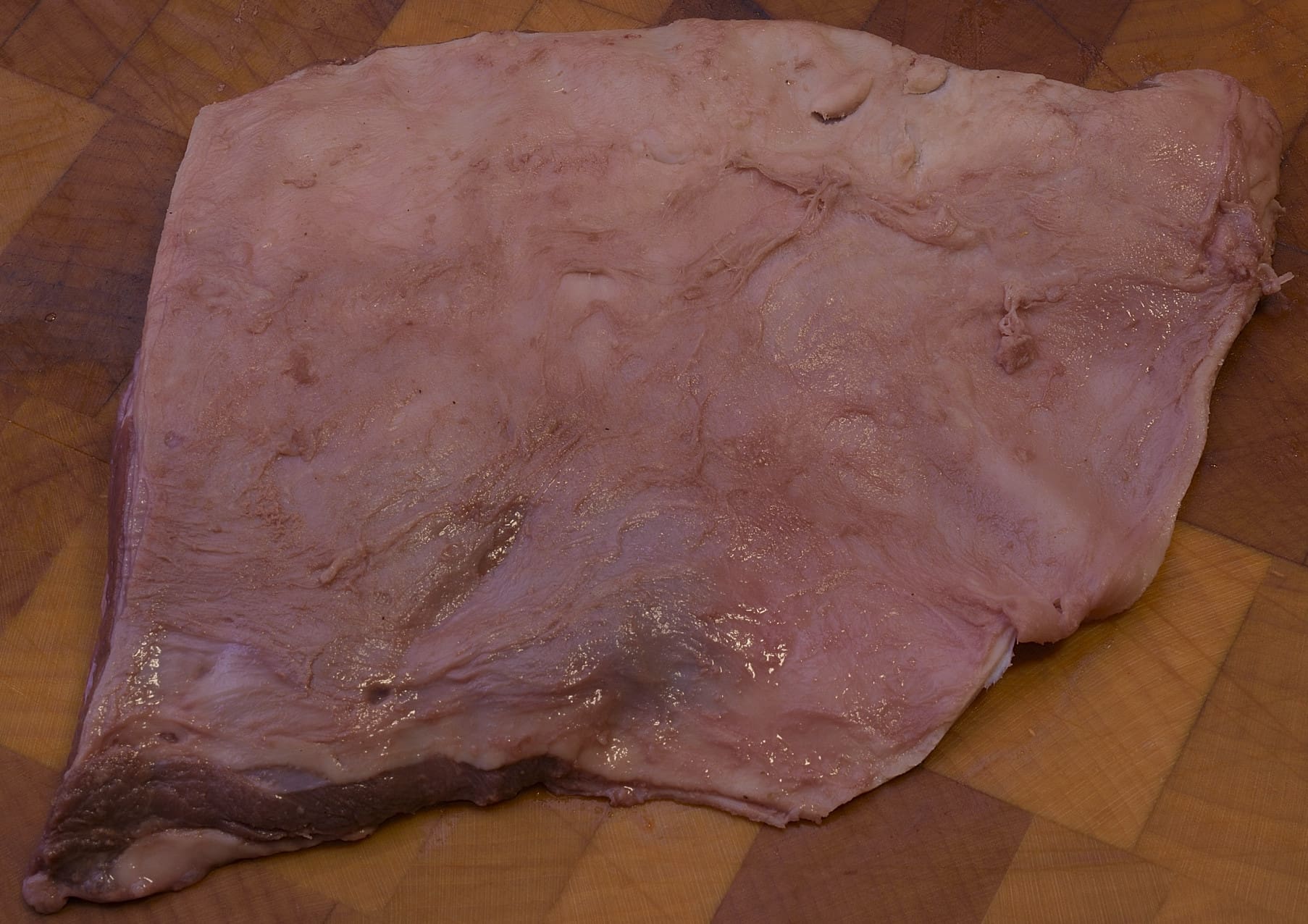
It can then be finished as explained in the article linked HERE,
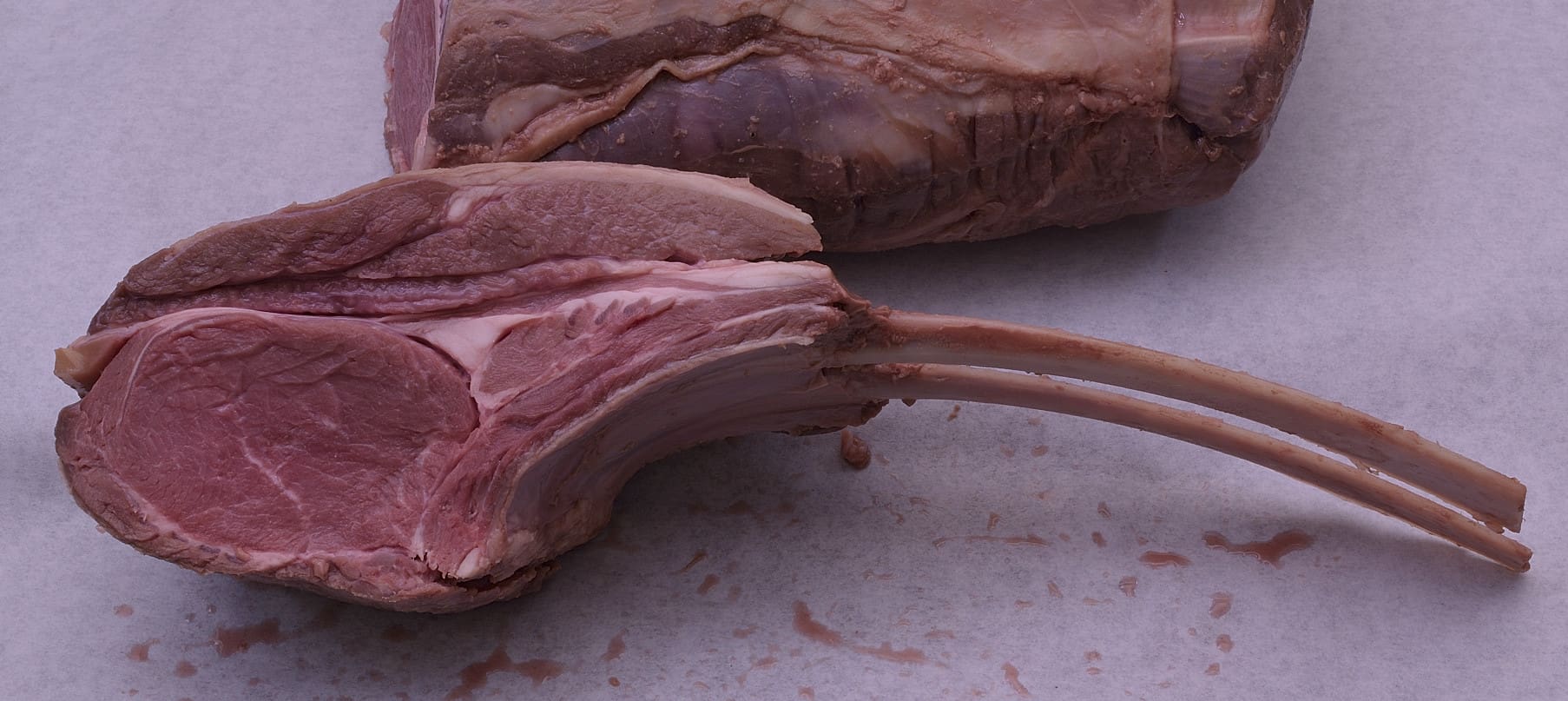
This double chop will be utilized in a different presentation model explained after the main body of this recipe.
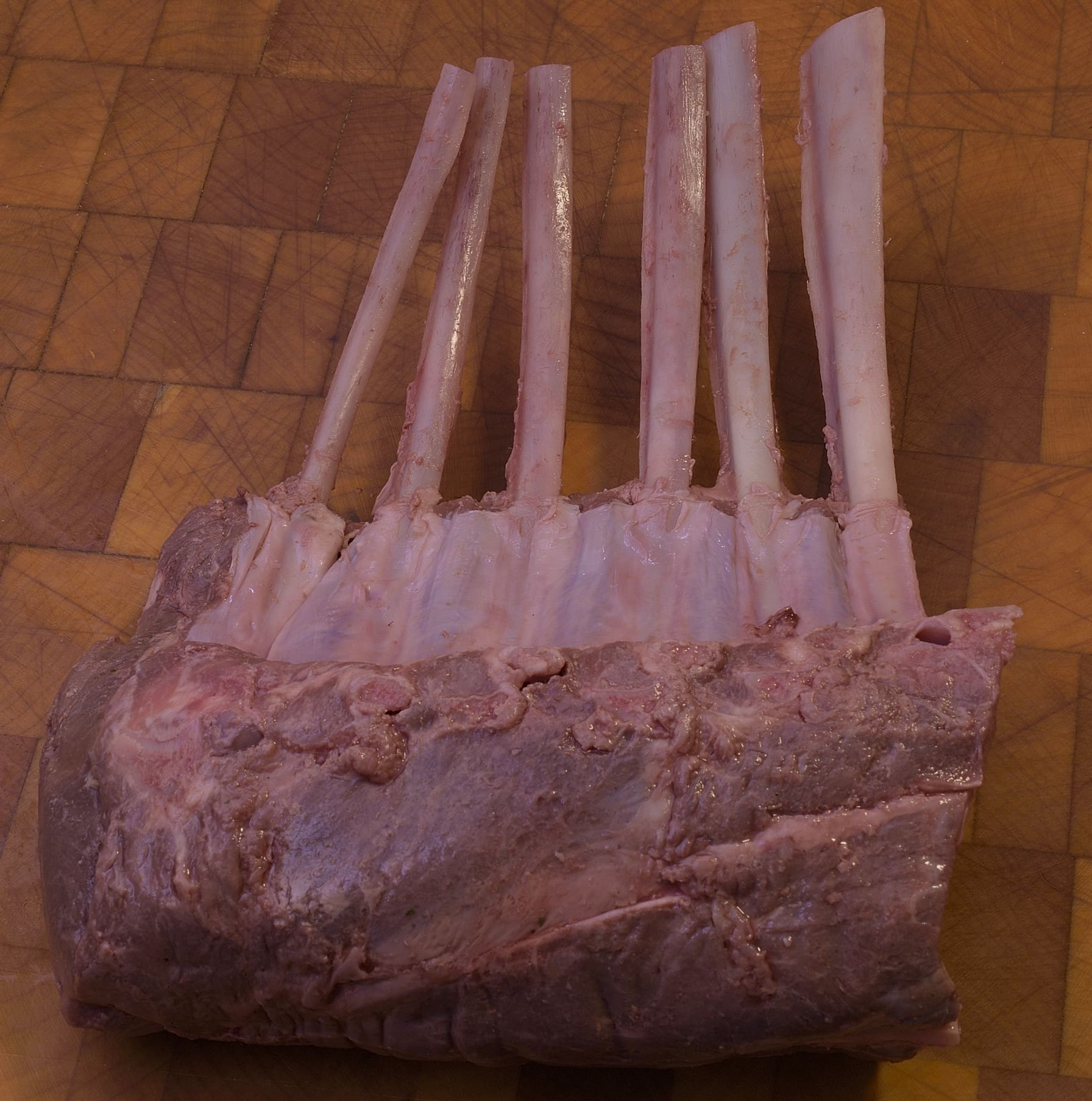
We now have a rack with six exposed ribs.
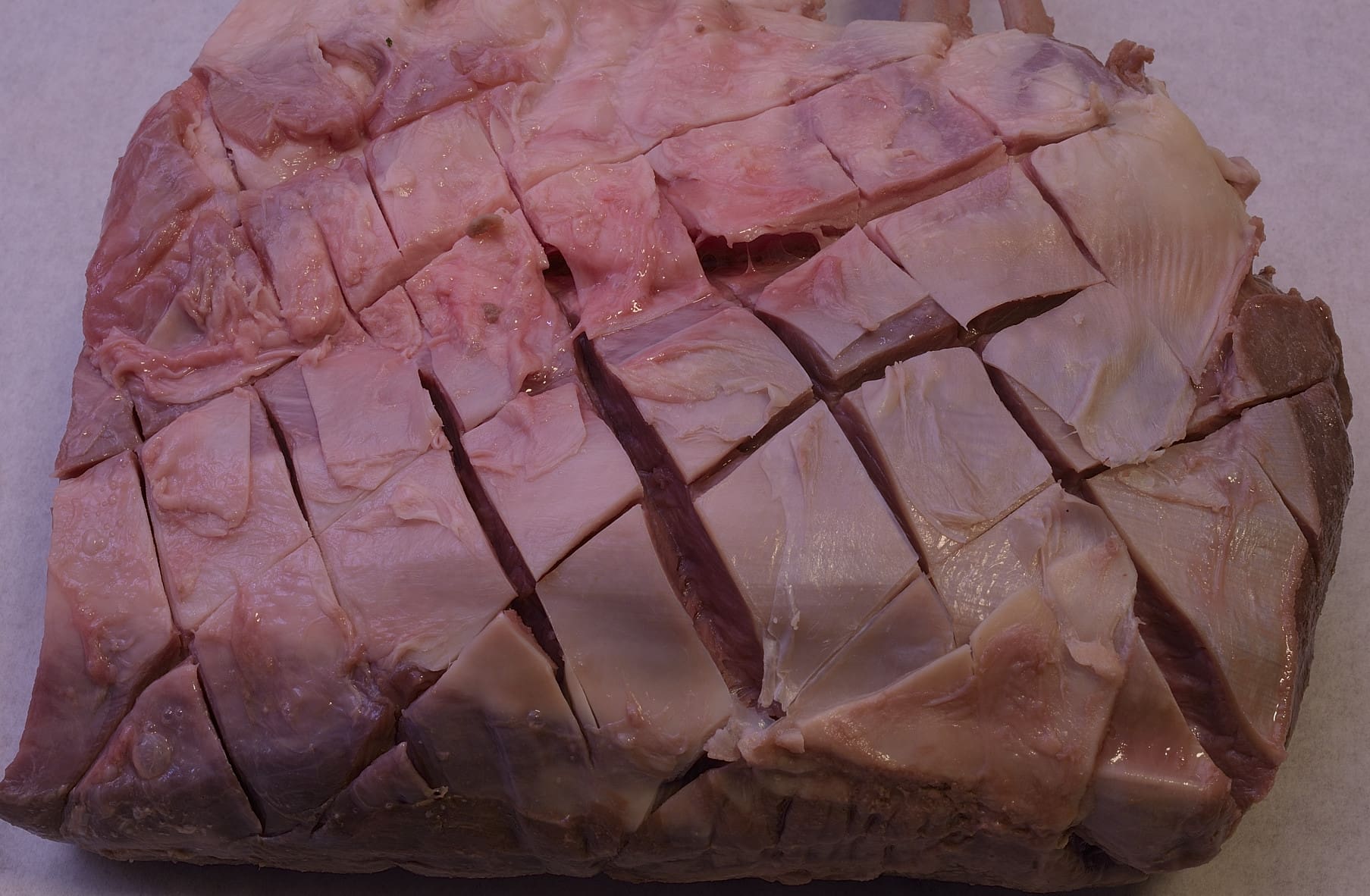
Turn the rack over to expose the skin side and cut diagonal gashes through the silver skin. This serves multiple purposes. Even though the young animal’s silver skin is not tough, it may have a tendency to “catch in the teeth.” Cutting the gashes also helps the seasonings to cling to the exposed side of the rack, as we will show.
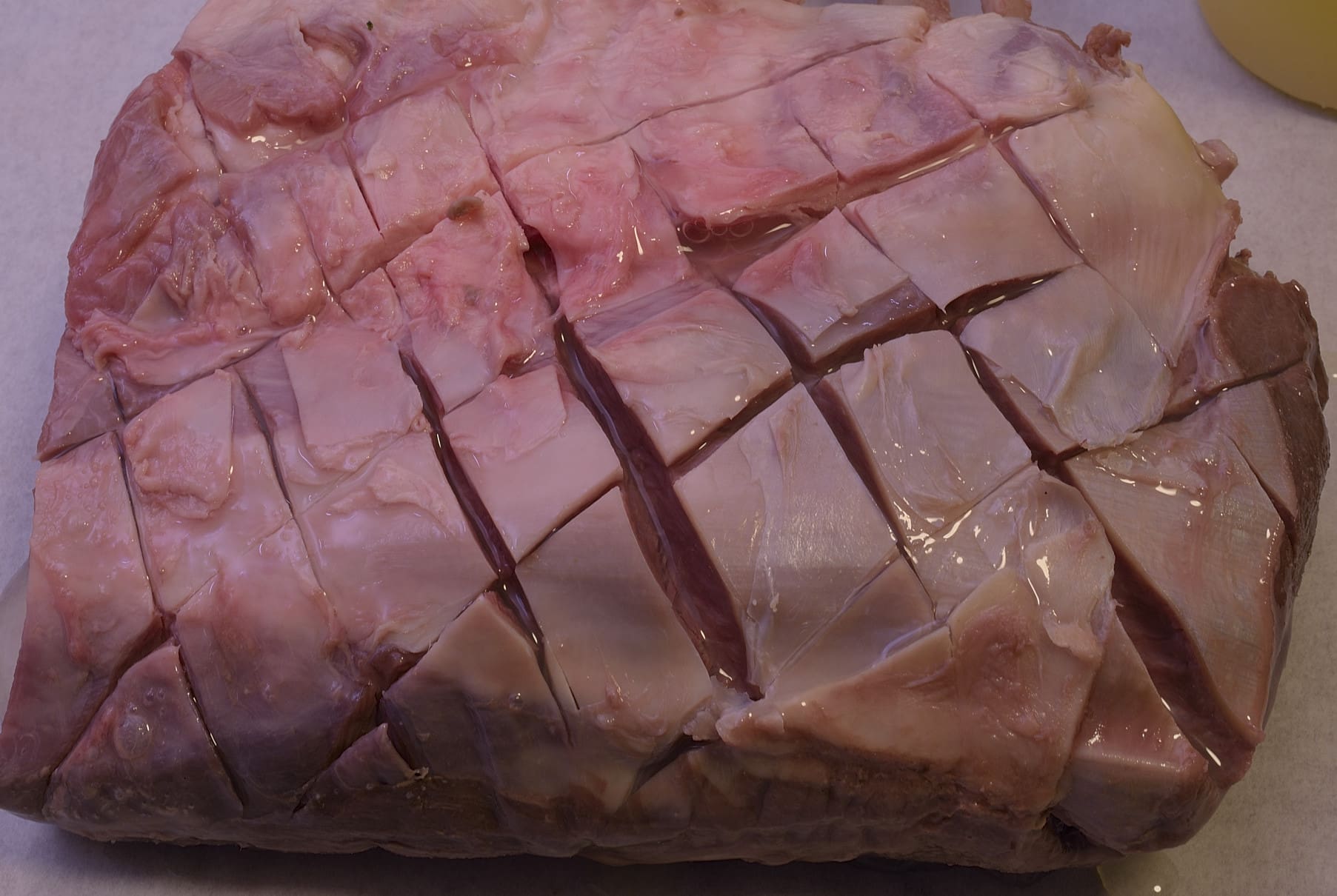
Drizzle the exposed surface with a few drops of the egg white/water solution. Sous vide denatures albuminous proteins, so the egg white solution helps seasonings cling to the rack.
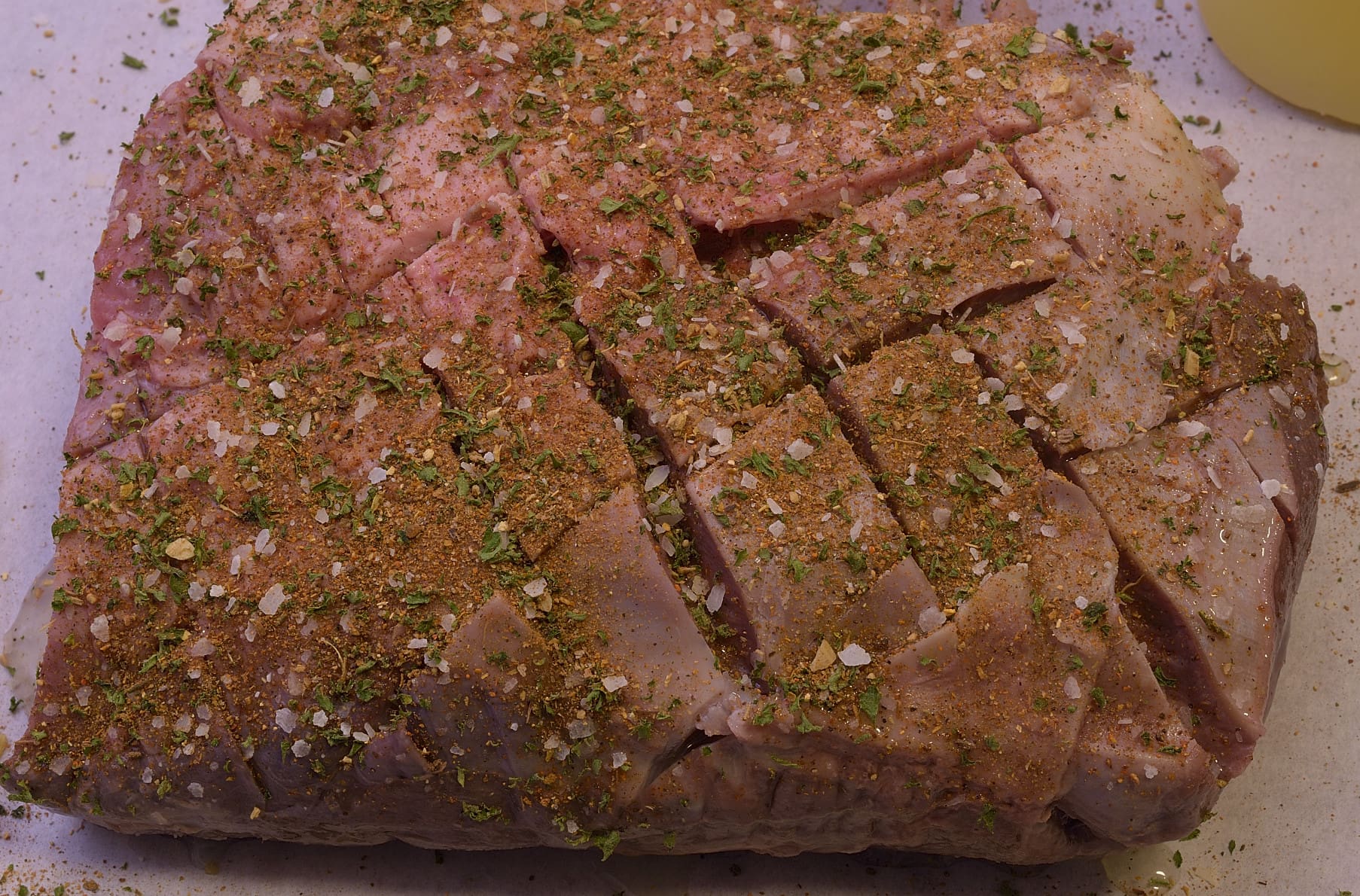
Sprinkle with the desired seasonings.
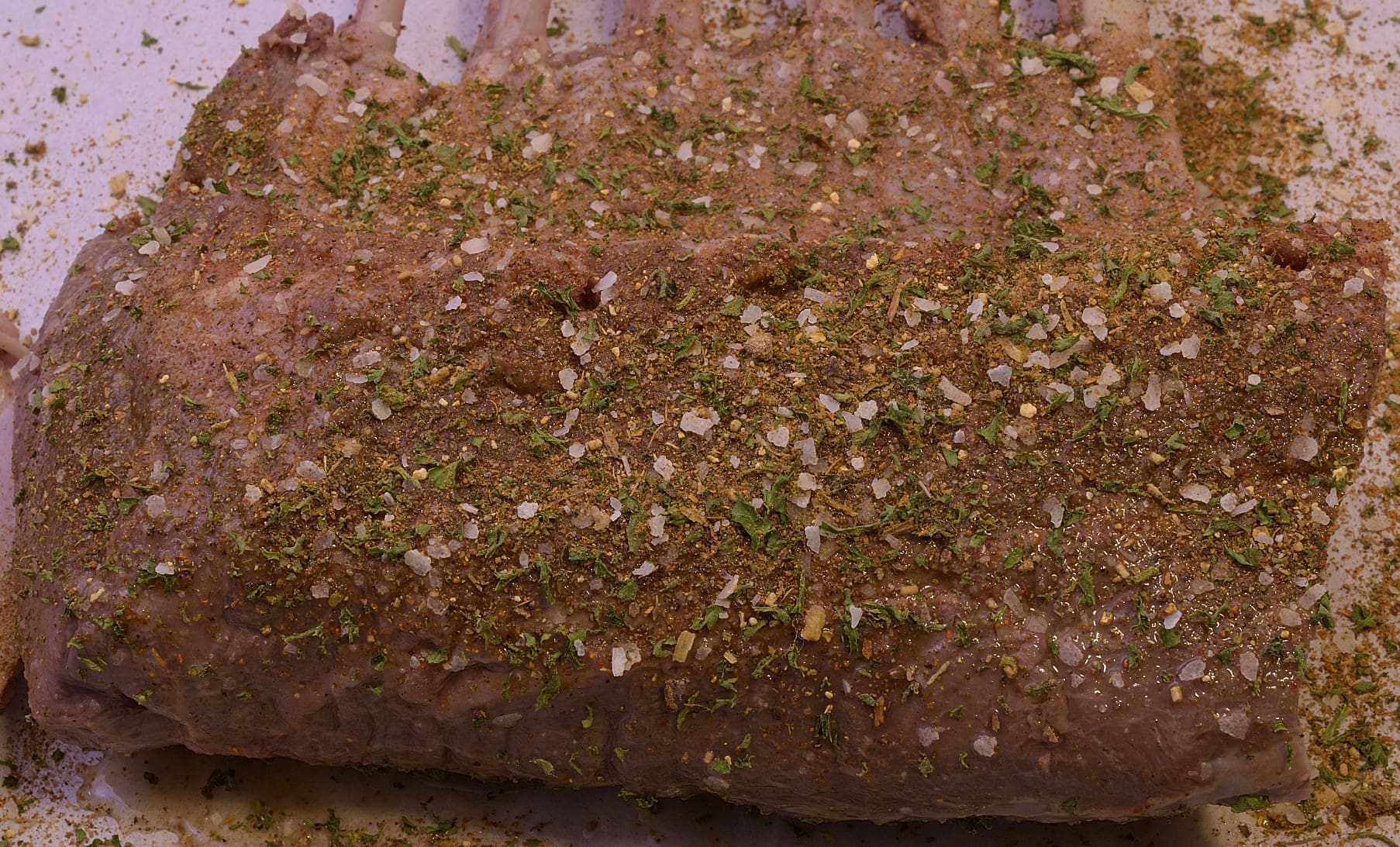
Turn the rack over, douse with the egg white solution and season as well. Note: You can see how little salt there actually is in this particular mix–the large white crystals are kosher (coarse, non-iodized) salt. Many chefs prefer this salt because it is easier to measure “by hand.”
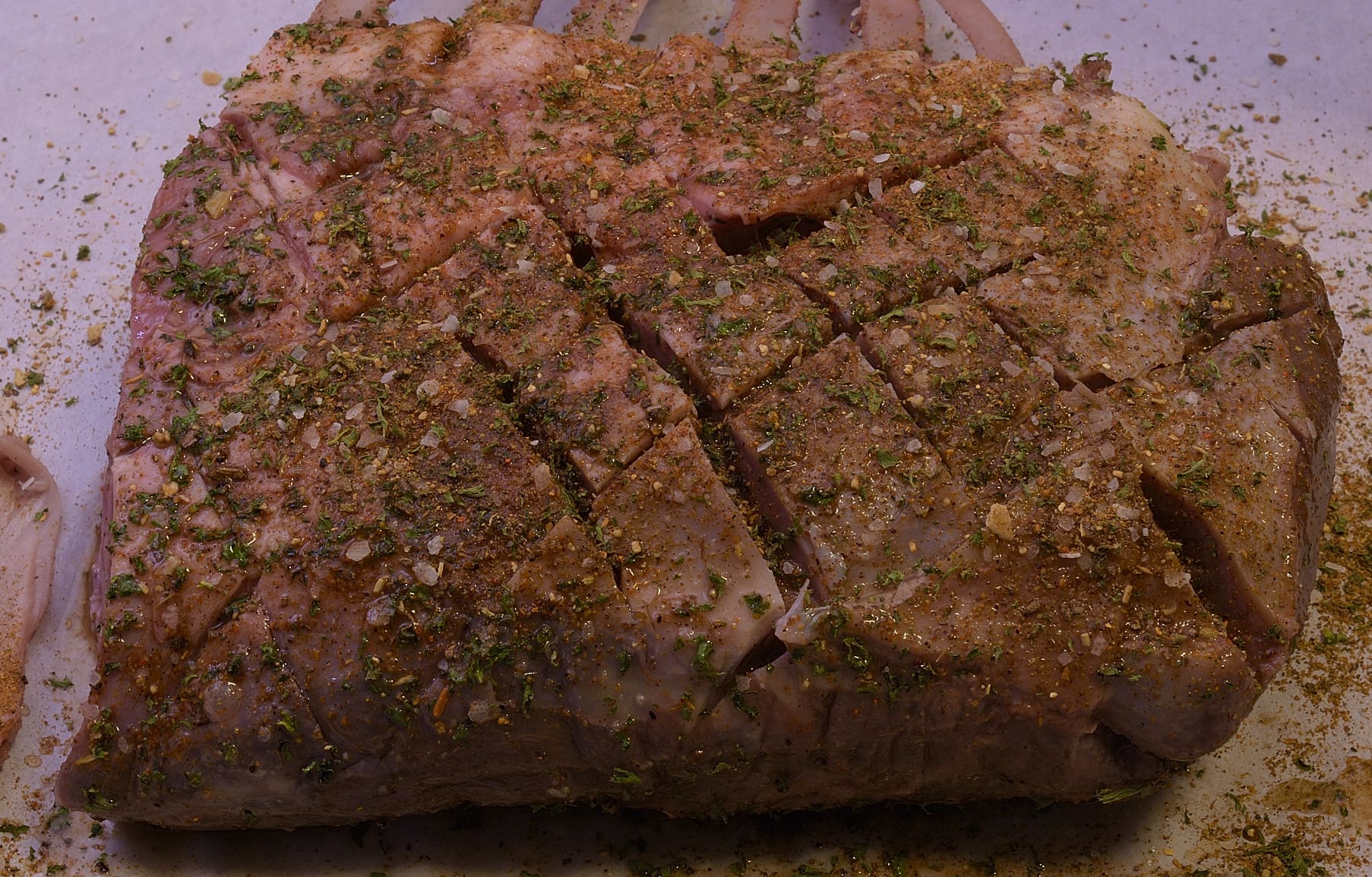
Turn the rack over to expose the skin side again. Some of the seasonings are bound to be left behind on the parchment so reapply as necessary. Drizzle or spray a few drops of oil on the seasoned surface–this promotes development of the crust and prevents the seasonings from being left behind in the pan. Preheat the cast iron broiler pan (or skillet) to 350 F/176 C.
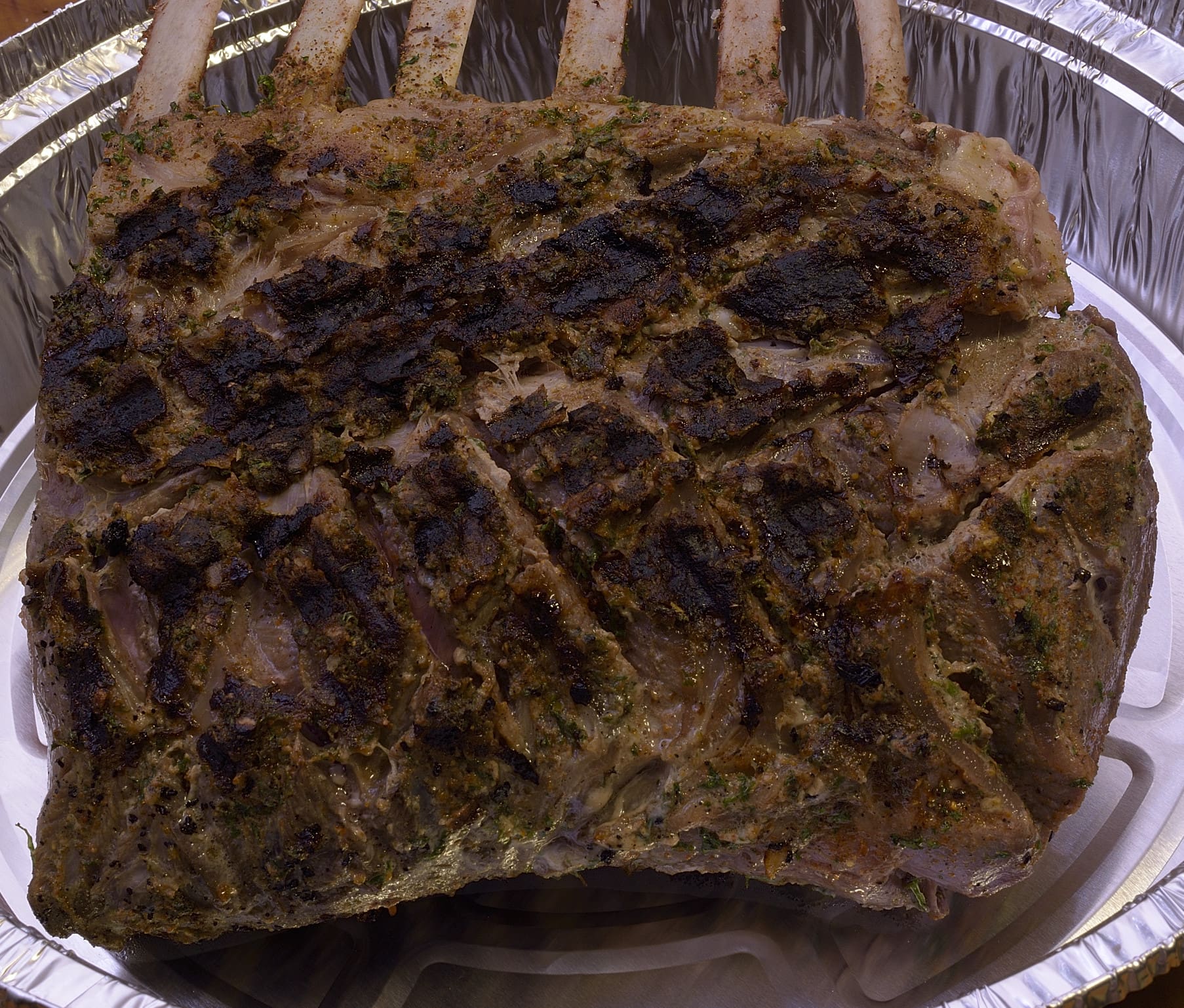
Brown well on both sides and transfer to a baking pan or vessel. I used a disposable aluminum foil “to-go” container. They are inexpensive and offer a benefit to the poor soul who must wash the pots, pans, and dishes after the chef has completed his demonstration.
To peel or not to peel
Whole almonds usually come with the peel on and there is no shame in serving (or eating) the skin along with the almonds. Once ground, the tiny bits of peel add a certain visual appeal and definition, so one should not be overly concerned. I was taught always to peel the almonds so it became a habit. It is very easy. Put a few ounces of almonds in a bowl and pour furiously boiling water over them. Wait five minutes, drain through a colander and spread out on a cookie sheet to speed up the cooling process. If you pinch an almond between your thumb and index finger, the naked almond will be ejected from its peel. We apprentices used to have contests to see who could squirt the almond the farthest, a youthful folly that our instructors found annoying and wasteful.
Combine the chopped almonds with the panko crumbs.
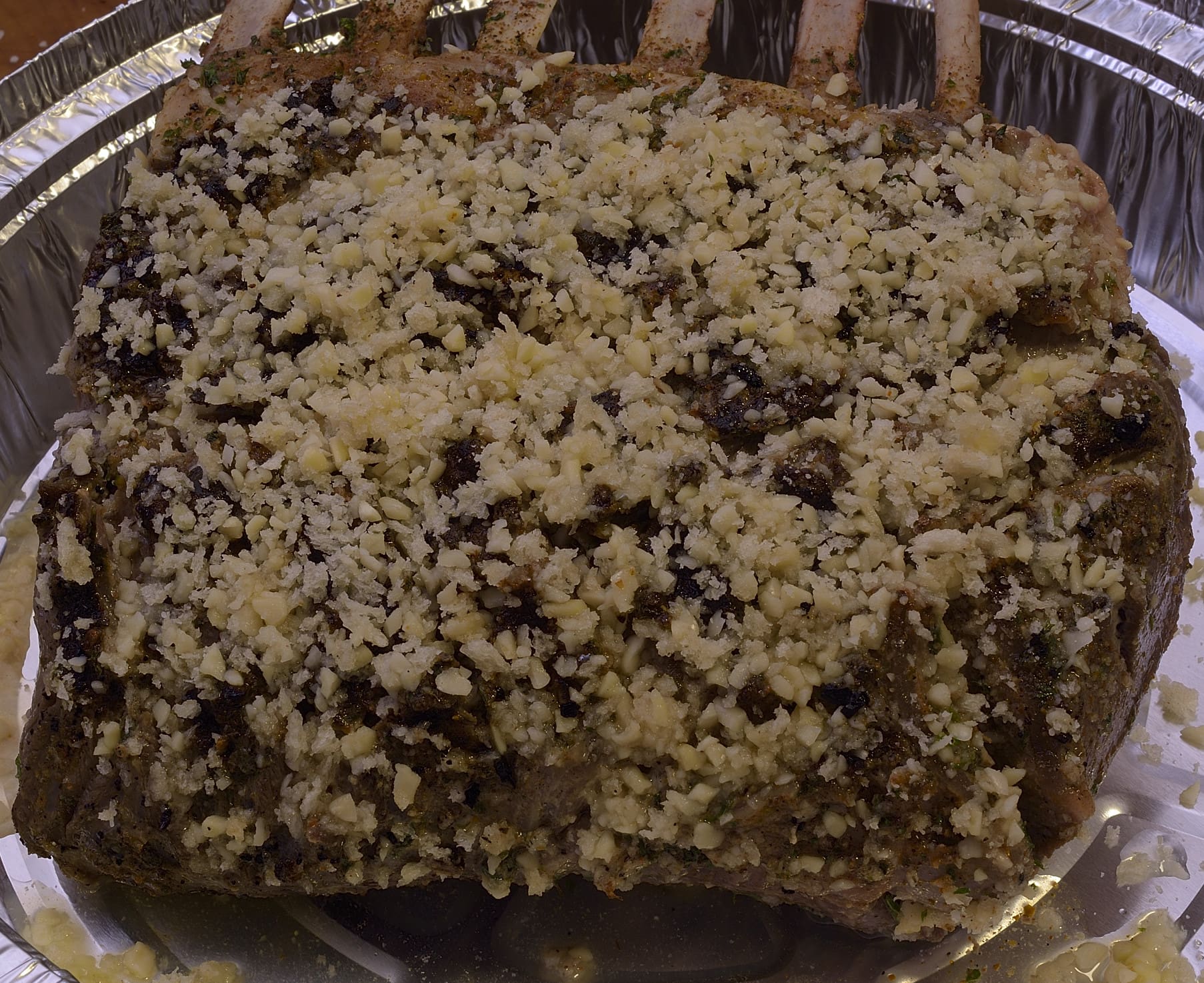
Apply a few drops of the egg white mixture over the top side of the rack and sprinkle with the nut/crumb mixture.
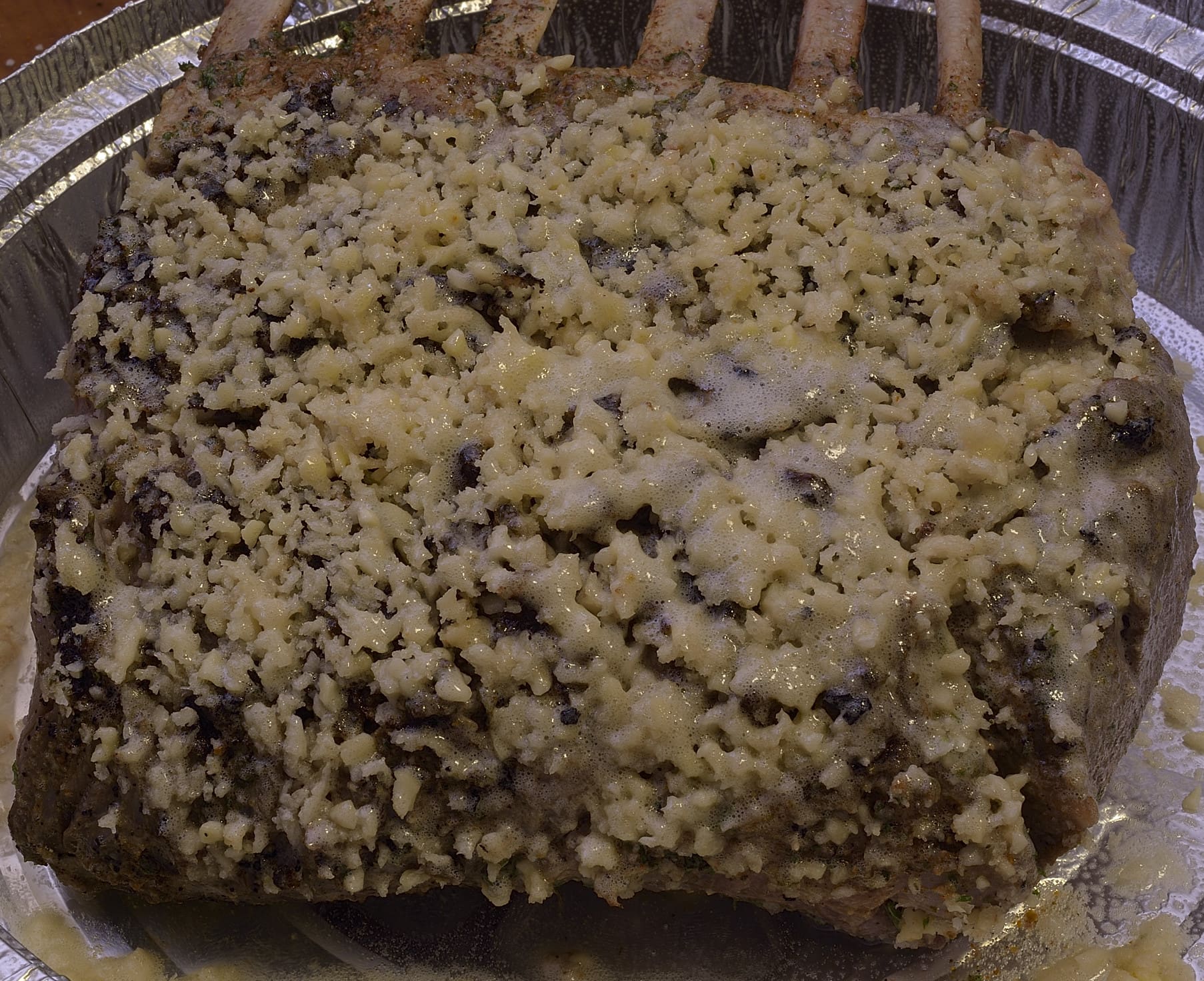
Spray or drizzle with a few drops of oil again to assist uniform browning and stage into the preheated oven.
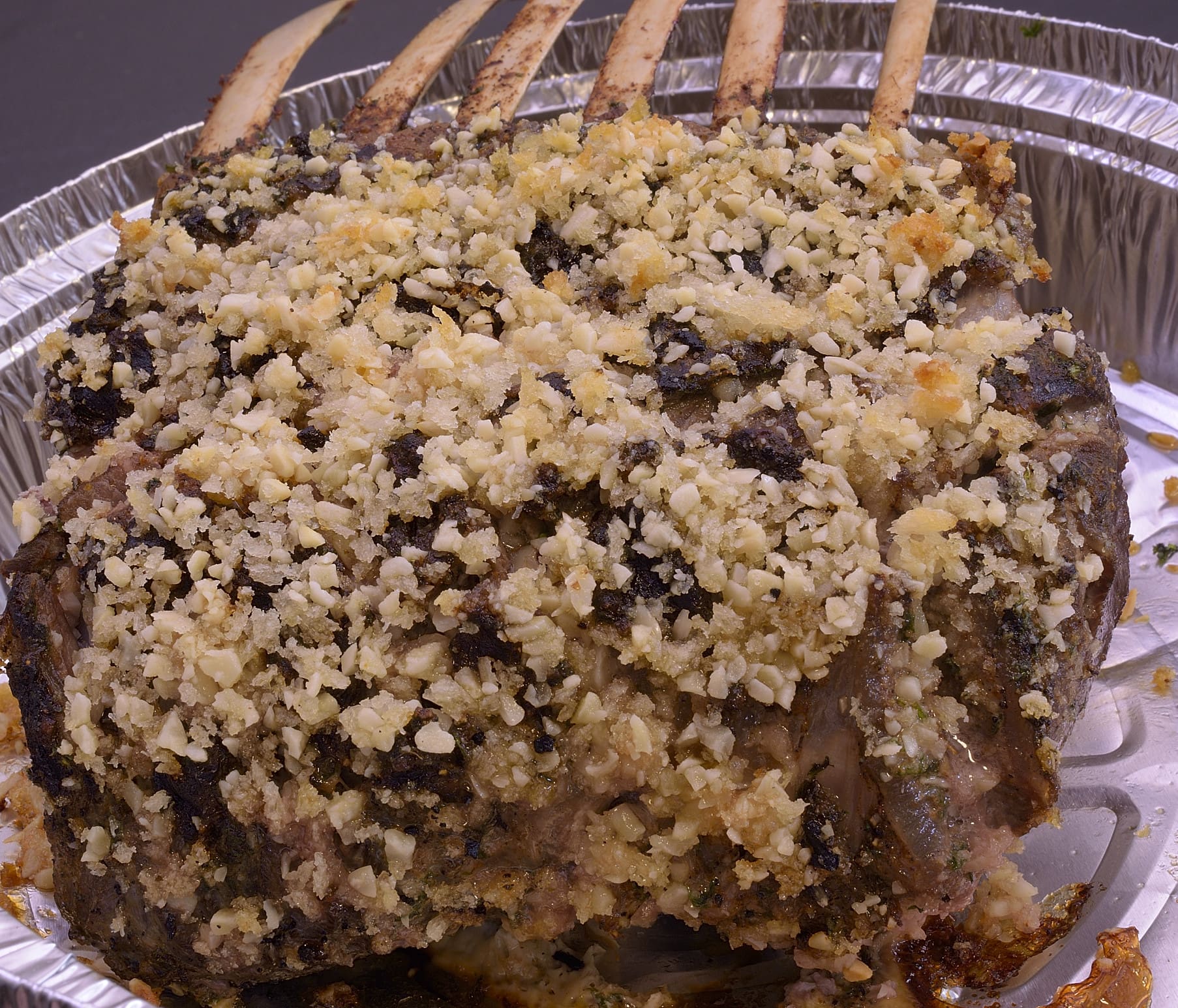
Roast only long enough for the crust to set–panko crumbs tend to retain their pale color. If you smell burning popcorn, you will know you roasted the almonds too long.
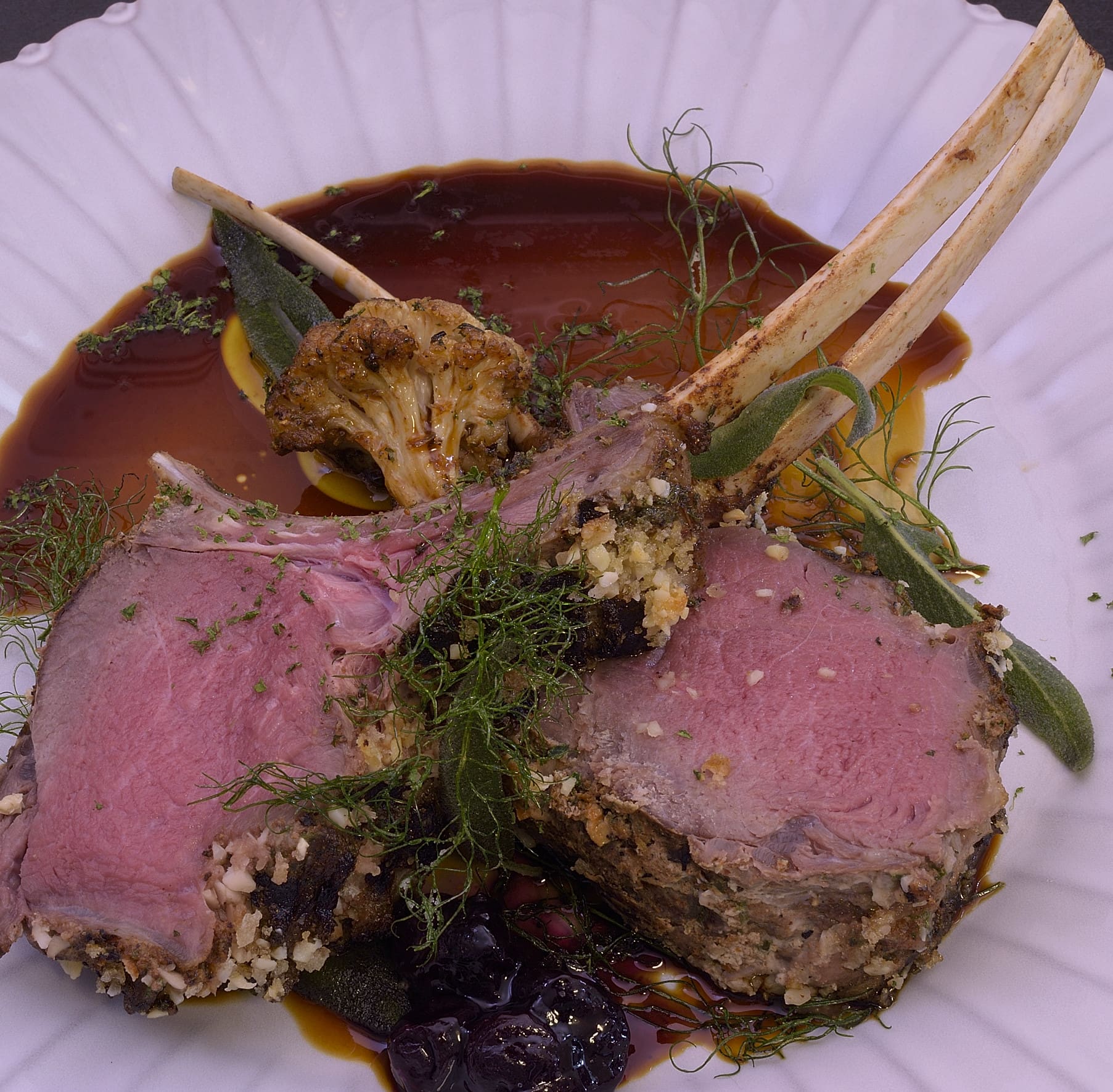
Let the roast rest for five minutes to make it easier to handle.
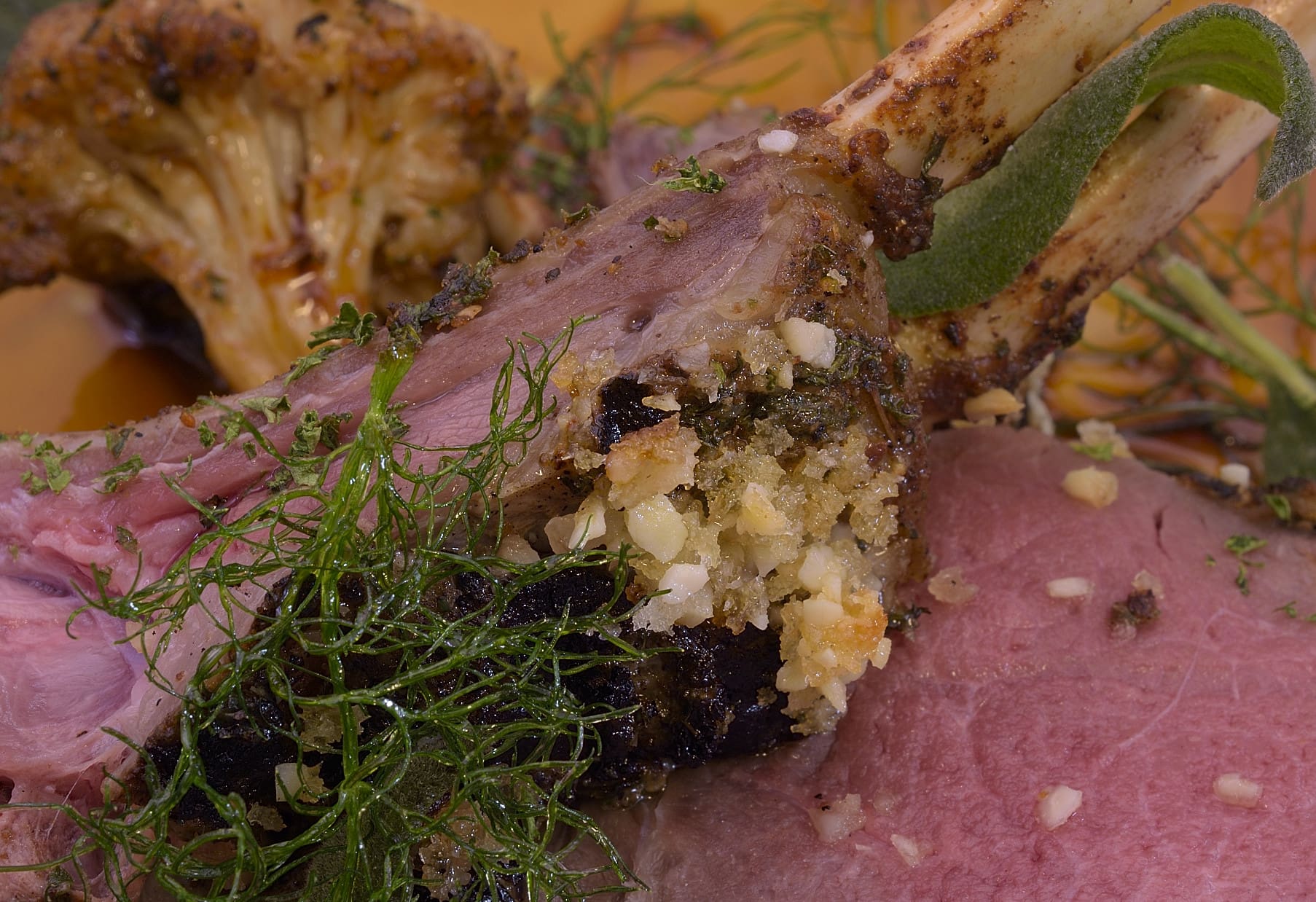
Carve carefully so as to avoid dislodging the crust. The leaves and fronds bring a geometric definition to the appearance.

Chopped parsley as signature.
Memory
Remember the double chop we cut from the shoulder end to expose the latissimus dorsi muscle? After removing the upper flap, we composed a whimsical “chef’s choice” salad as a base for the grilled and carved chop.
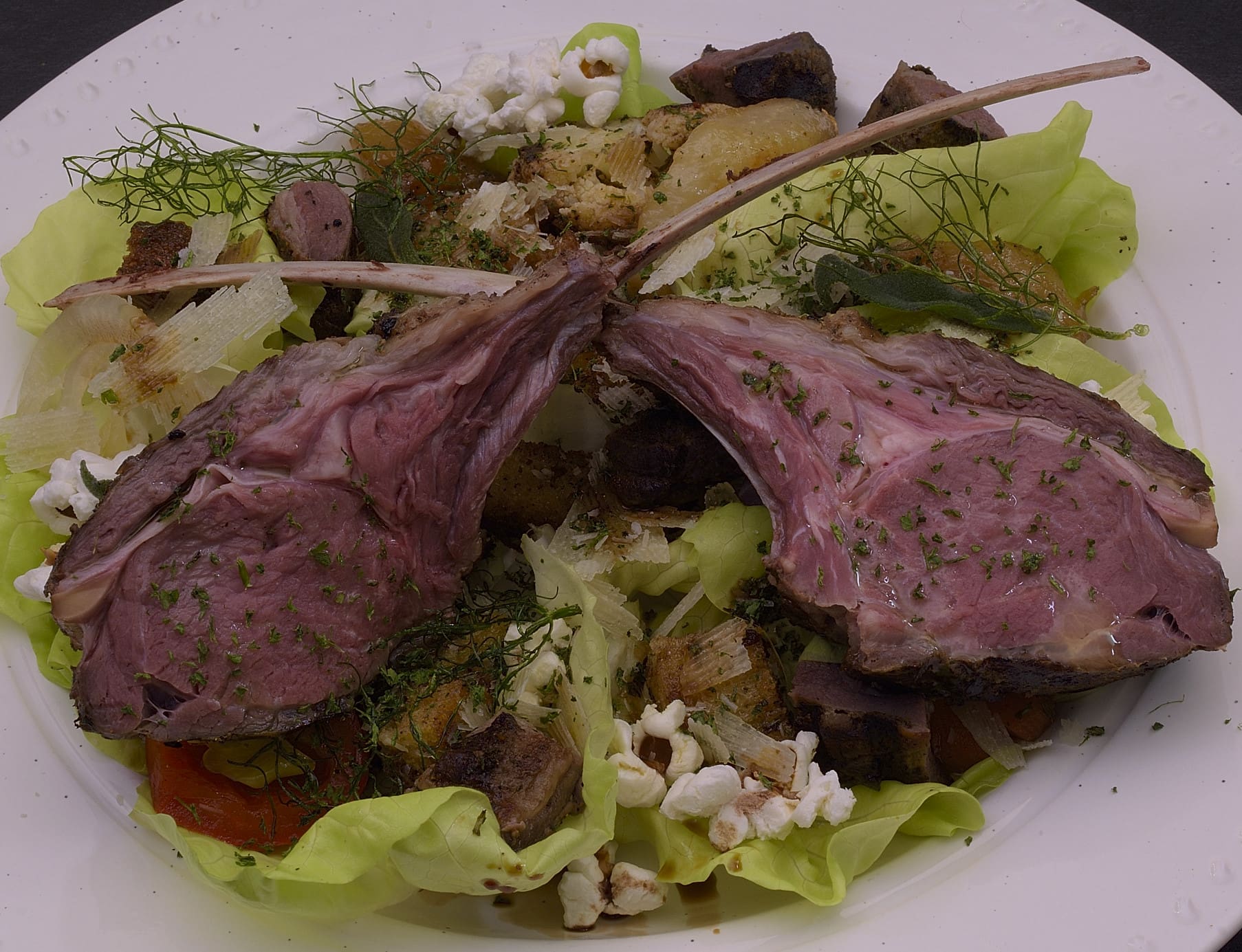
Butter lettuce, baguette croutons, popcorn, caramelized pears, pickled sweet peppers and onions,
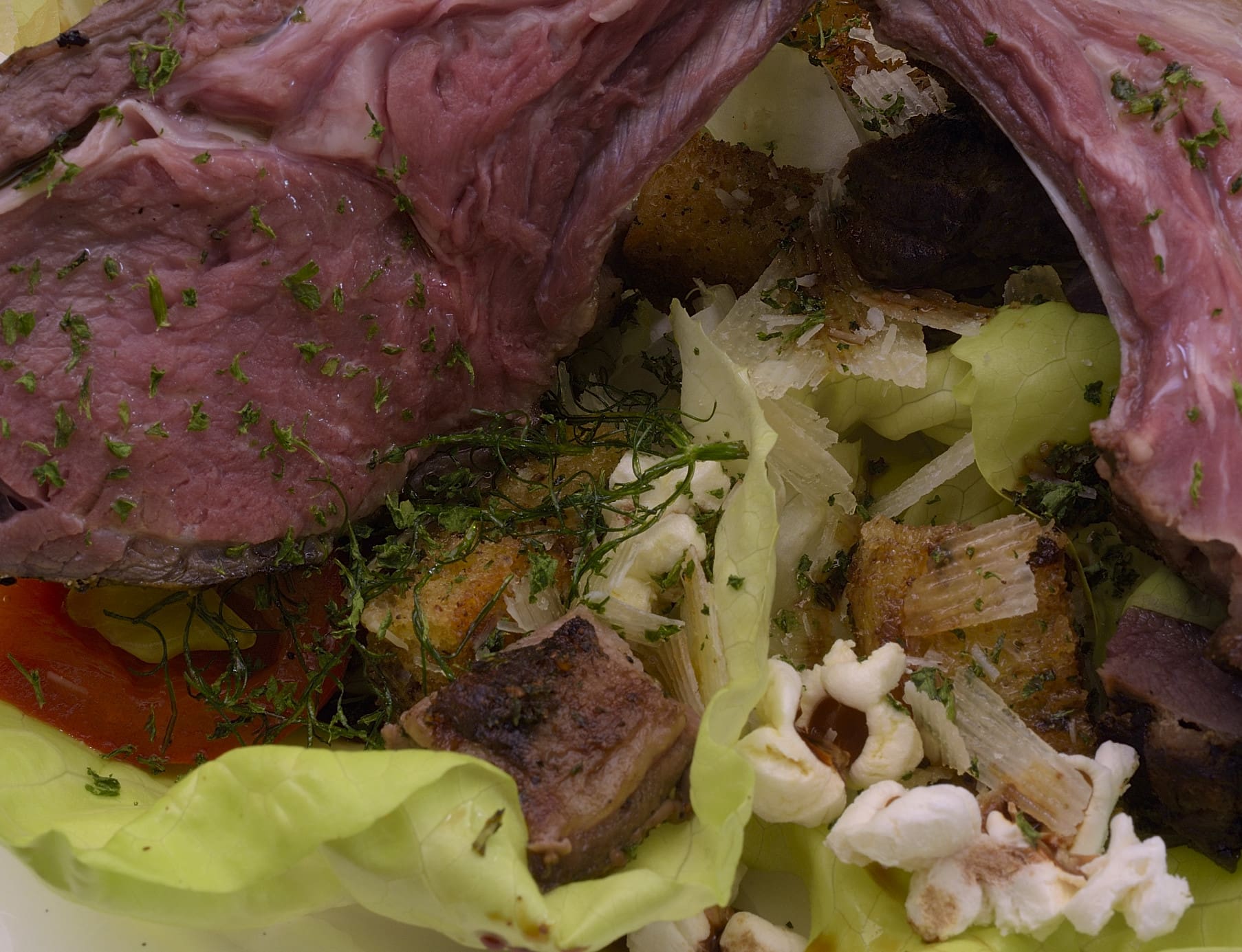
Reggiano, extra virgin olive oil, balsamic syrup and the crisped leaves.
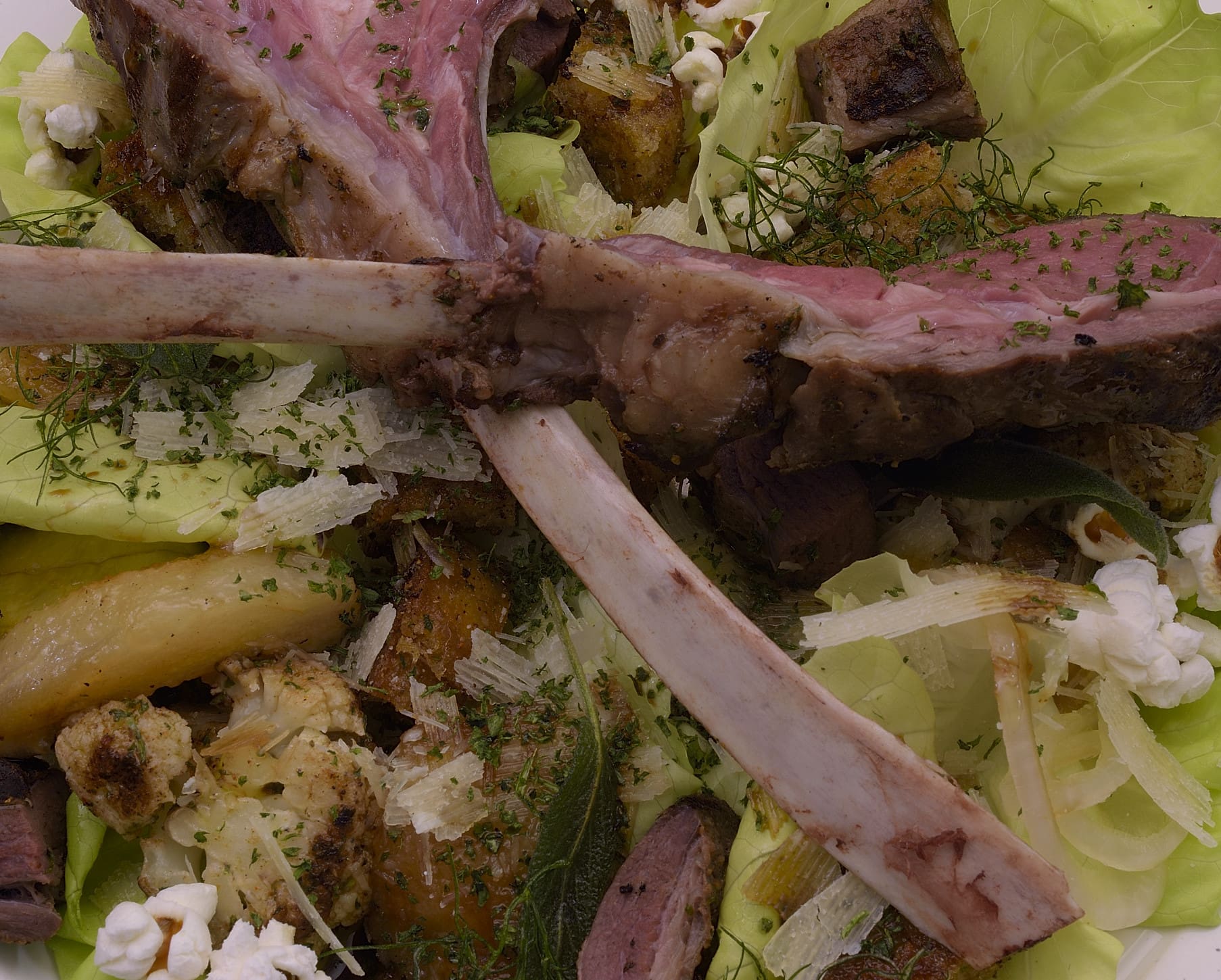
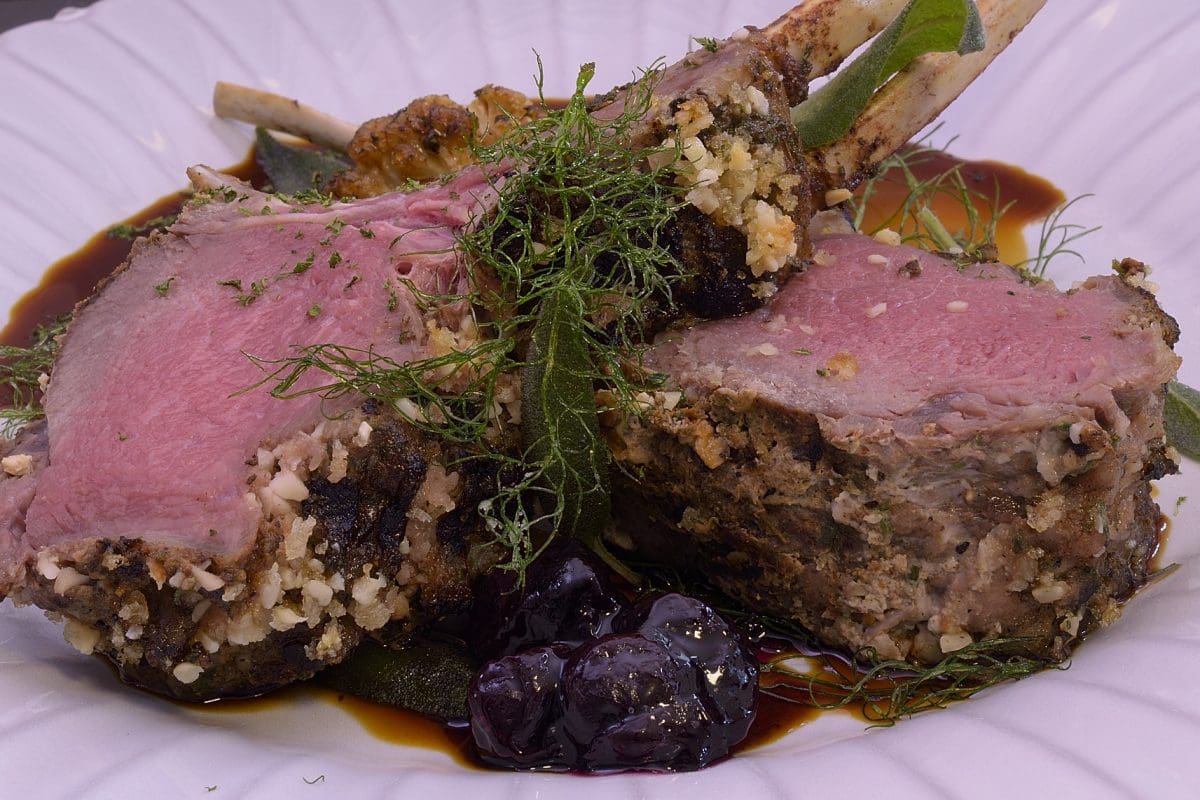
I think the admin of this site is in fact working hard in favor of his website, for the reason that here every
material is quality based stuff. https://Www.Waste-Ndc.pro/community/profile/tressa79906983/
I’m reallly enjoying the design and layout
of your website. It’s a very easy on the eyes which maes it mufh more pleasant for mme to come here and
visit more often. Did you hire out a developer to create your theme?
Exceptional work! https://663b88bd73e33.site123.me/